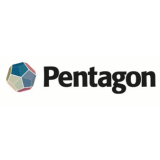This informal CPD article ‘The Evolution of Document Control in Engineering: From Paper to Digital’, was provided by Pentagon Solutions, a leading technology and consultancy partner in the UK & Ireland for companies who strive to gain efficiencies in their business by digitalisation of their assets and processes.
Introduction
In the field of engineering, effective document management is crucial for ensuring project accuracy, regulatory compliance, and seamless collaboration. The shift from traditional paper-based document control to modern digital solutions has transformed how engineering teams handle and share critical project information. This article explores the evolution of document control in engineering, highlighting the transition from manual processes to advanced digital systems and their impact on efficiency, accuracy, and compliance.
The Paper Era: Challenges and Limitations in Engineering Document Management
Before the rise of digital solutions, engineering document control was heavily reliant on physical documents. This traditional approach, which dominated until the early 1990s, presented several challenges:
- Manual Filing and Storage: Engineering projects often generate vast amounts of documentation, including technical drawings, specifications, and reports. Storing these documents in physical filing cabinets led to inefficiencies in organisation and retrieval.
- Version Control Issues: Managing revisions in engineering documents was labour-intensive. Manual updates to technical drawings and specifications could lead to inconsistencies and errors if the latest versions were not properly tracked.
- Limited Accessibility: Physical documents were only accessible to those within the office or project site, complicating collaboration with remote teams or external stakeholders. This limitation often resulted in delays and communication bottlenecks.
These challenges frequently led to inefficiencies, errors, and difficulties in meeting industry standards and regulatory requirements.
The Advent of Engineering Document Management Systems (EDMS)
Engineering Document Management Systems (EDMS) began to emerge in the early 1990s as a solution to the limitations of paper-based document control. The development and adoption of these systems marked a significant advancement in managing engineering documents.
Key benefits of using an EDMS include:
- Centralised Storage: EDMS offer a centralised electronic repository specifically designed for engineering project documents. This improves organisation and provides quick access to technical drawings, specifications, and other critical files.
- Enhanced Version Control: EDMS include automated version control features tailored for engineering documents. This ensures that all team members work with the most current versions of drawings and specifications, reducing the risk of errors and inconsistencies.
- Improved Accessibility: EDMS enable remote access to project files, facilitating collaboration among engineering teams that may be geographically dispersed. Secure access controls help maintain document integrity and confidentiality.
These advancements have significantly improved efficiency, reduced errors, and supported compliance with engineering standards and regulations.
The Rise of Cloud-Based Document Management Solutions
The 21st century saw the rise of cloud-based document management solutions, which further transformed document control in engineering:
- Scalability and Flexibility: Cloud solutions, becoming prominent in the 2000s, provide scalable storage options and allow engineers to access documents from anywhere with an internet connection. This flexibility supports remote work and collaboration across different locations.
- Real-Time Collaboration: Cloud platforms facilitate real-time collaboration on engineering documents, enabling multiple users to work on the same file simultaneously. This capability enhances productivity and ensures that all team members are aligned with the latest information.
- Integration with Engineering Systems: Modern cloud-based EDMS integrate seamlessly with engineering systems, such as computer-aided design (CAD) software and project management tools. This integration streamlines workflows and enhances overall project efficiency.
The Future of Document Control in Engineering: Trends and Innovations
Looking ahead, the evolution of document control in engineering will likely be shaped by several emerging trends:
- Artificial Intelligence (AI) and Machine Learning (ML): AI and ML are increasingly being used to automate document management tasks, including document classification, data extraction, and compliance monitoring. These technologies promise to enhance the accuracy and efficiency of engineering document management.
- Blockchain for Document Security: Blockchain technology offers a decentralised approach to securing engineering documents. By creating immutable records of document transactions, blockchain enhances transparency and prevents unauthorised alterations.
- Advanced Analytics and Reporting: Future document management systems are expected to provide advanced analytics and reporting capabilities, offering insights into document usage, workflow efficiency, and project compliance.
Embracing the Future of Engineering Document Management
The evolution of document control in engineering, from paper-based systems to digital solutions, represents significant advancements in managing and processing project information. This transition from traditional methods to modern technologies has enhanced efficiency, accuracy, and collaboration in engineering projects. As technology continues to advance, the future of document control will bring new opportunities for innovation and improvement, further enhancing how engineers manage and share critical project information.
We hope this article was helpful. For more information from Pentagon Solutions, please visit their CPD Member Directory page. Alternatively, you can go to CPD Industry Hubs for more articles, courses and events relevant to your Continuing Professional Development requirements.













